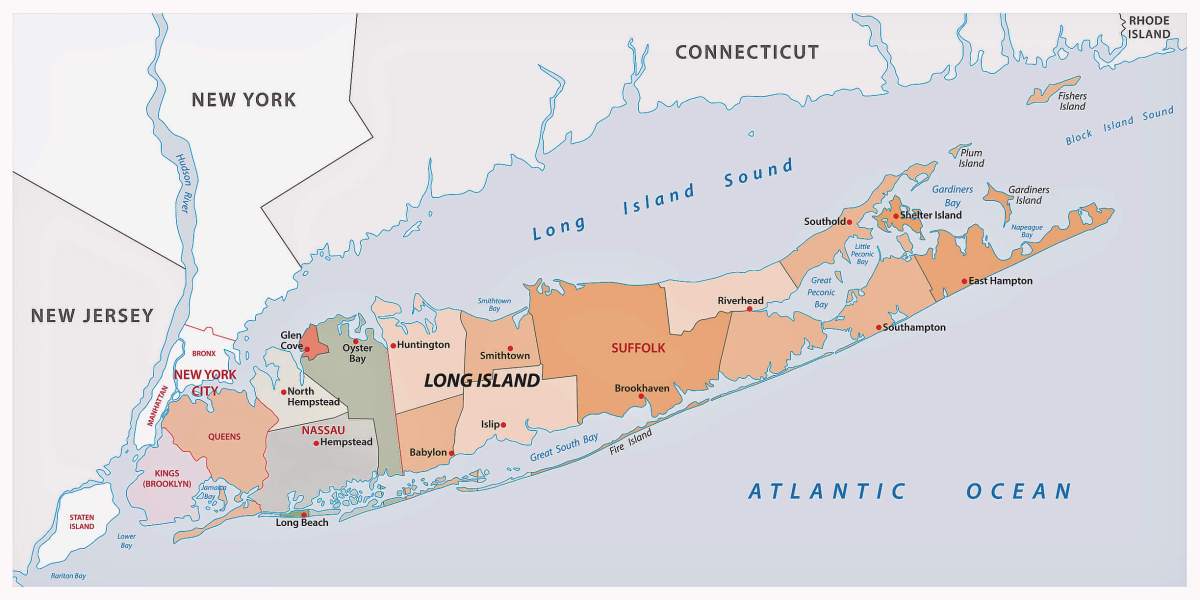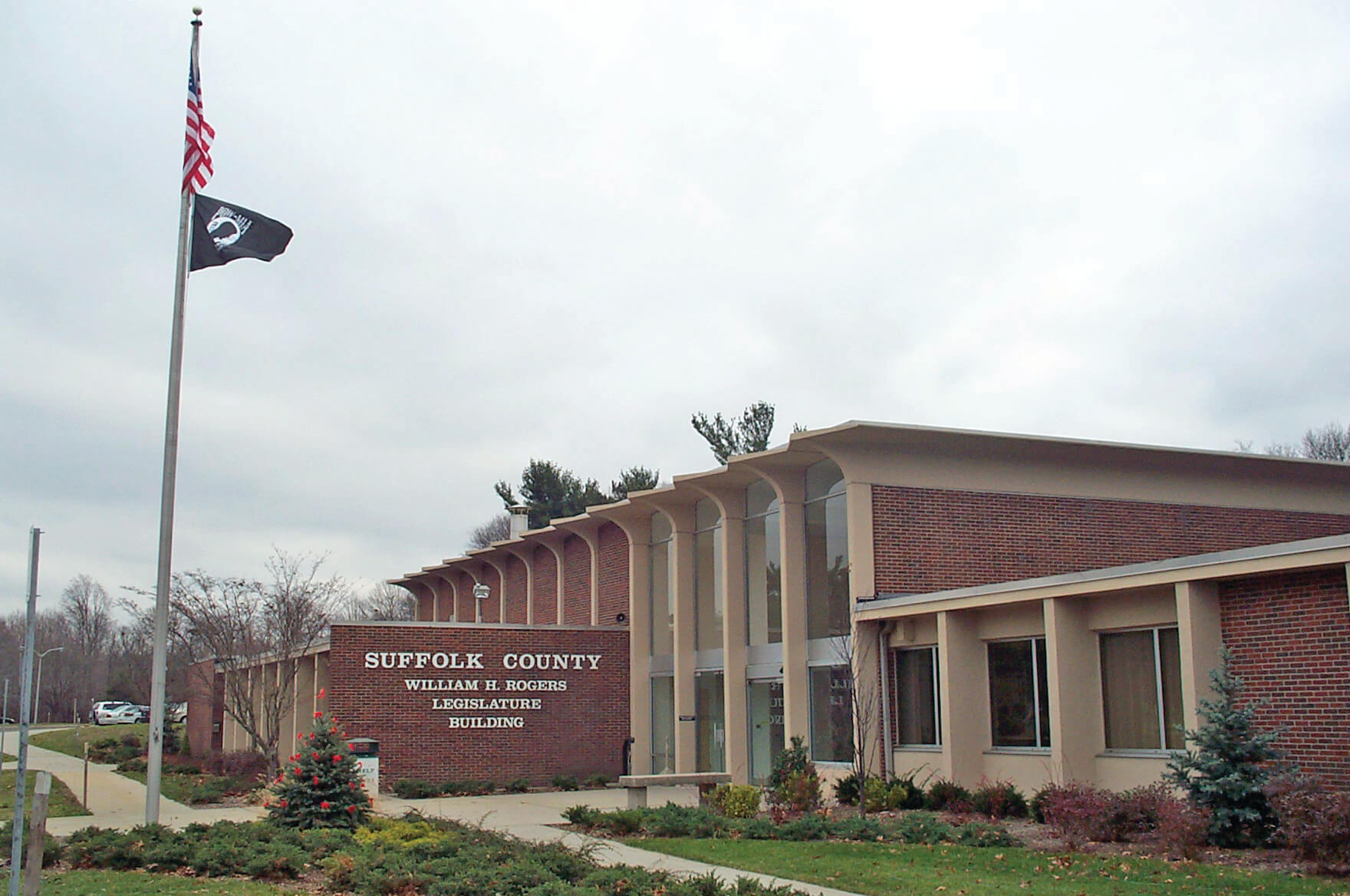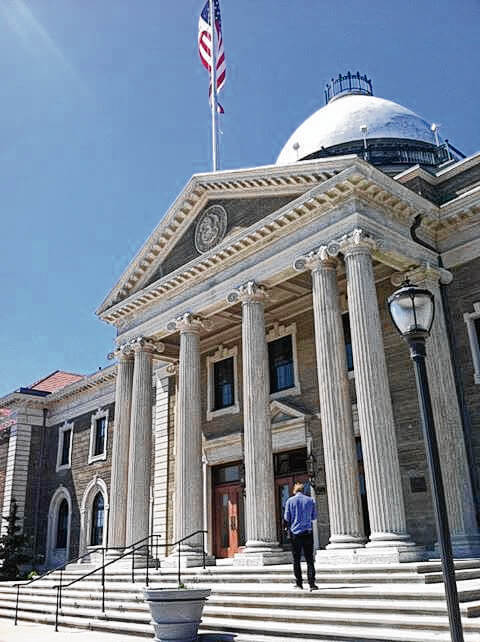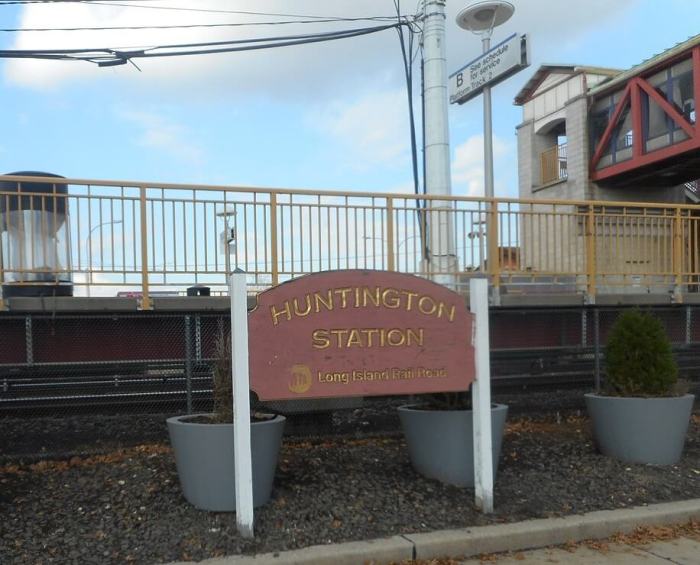It’s neither a presidential nor a midterm election year — but with elections in both Nassau and Suffolk counties as well as elections in every town, 2023 is a very important year for Long Island.
Both the Nassau and Suffolk County Legislatures have all their seats up for election, with Nassau’s districts recently undergoing a redrawing. There is a race for county executive in Suffolk — the first one in more than 10 years where Steve Bellone, who is term limited, will not be on the ballot.
Additionally, there are also town supervisor races in nine of Long Island’s 13 towns — Hempstead, North Hempstead, Oyster Bay, Southold, Riverhead, Shelter Island, Southampton, Brookhaven, and East Hampton. The towns of Islip, Babylon, and Huntington still have elections for other positions.
Trends On Long Island
Two of Long Island’s resident political pundits spoke with the Press about their predictions for the 2023 election on Long Island and trends to look out for.
Michael Dawidziak is a nationally known pollster and political strategist who has done work for national campaigns. He is the founder of Strategic Planning Systems Inc.
“We’ve had a red wave two years in a row,” Dawidziak told the Press. “Usually, I say that these things are usually a one-year phenomenon. Whether it was after Watergate or Obama year, we had big blue waves. Usually, the tsunami-type years are basically one-year events. But on Long Island, that may not be the case. The polling is showing that the red wave is not necessarily abating. This is mostly because Albany seems intent on stoking it. Most of the things that Albany has done over the past two years have not gone over well in the suburbs.”
The issues that the Democratic-led New York State Legislature has taken up but proven unpopular with Long Islanders, according to Dawidziak, are initiatives such as congestion pricing, the MTA tax, and attempting to overrule local zoning laws to mandate steep affordable housing quotas. But it’s not necessarily an issue of Long Island’s political alignment when it comes to why the region is at odds with state lawmakers in Albany.
“Long Island is as purple as purple can be,” he said. “It’s probably about a third Republican, a third Democrat, a third independent. Long Island pays more in taxes than we get back in services. New York State sends more money to Washington, D.C., than it gets back in services. Long Islanders are happy to pay their fair share of taxes — even more than willing. But when it comes to those things that aren’t good for our area — the suburbs — people are going to get upset.”
But it’s not impossible for Democrats to pull it off, at least not according to Jerry Kremer, a former New York State assemblyman and frequent columnist for local newspapers.
“I was looking at some type of poll that seemed to indicate that when they asked people about party preference, Democrats were about eight points ahead of Republicans, which sort of surprised me,” Kremer told the Press. “Right now it’s a jump ball. It’s really too soon for any major predictions.”
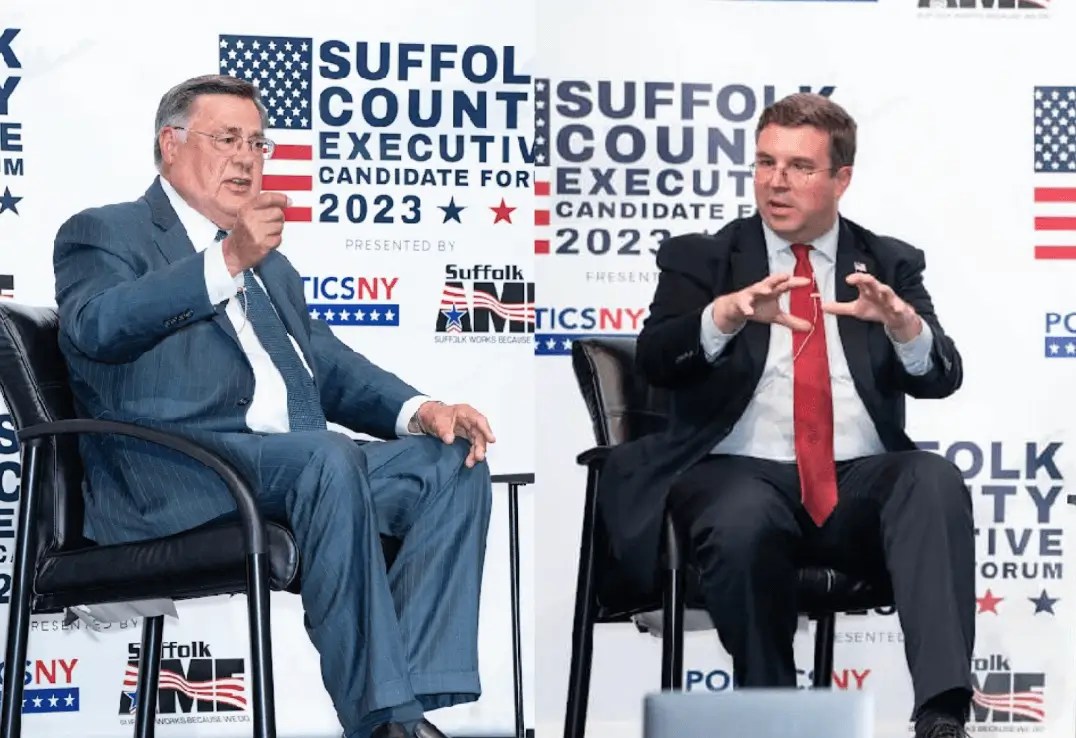
(Corazon Aguirre)
Suffolk County Executive Race
Kremer predicts that the Suffolk County Executive race will be a close one.
“You have a Democrat who has a lot of money, he is very articulate, and he’s going to run a very hard campaign,” Kremer said of candidate Dave Calone. “Then you have Ed Romaine, who has held many positions in the Town of Brookhaven including town supervisor and has a lot of name recognition. Republicans will use Bellone’s issues such as the cybersecurity breach as reason to say they can’t govern.”
Dawidziak sees the outcome leaning in favor of Ed Romaine — for now.
“Dave Calone is an excellent candidate,” Dawidziak said. “He has a great resume, but I think this is going to be a tough year. It’s certainly an uphill battle for him to win this year. It’s hard to see him winning Smithtown, Brookhaven, or Islip. Those three towns are enough to give somebody the countywide victory. Huntington has also gotten more red in recent years. But it’s early, and just like Albany Democrats can mess it up for local Democrats, national Republicans can do the same for locals.”
Kremer agreed that Smithtown and Brookhaven should be a lock for Romaine, but he added that it’s too early to predict a winner in the race.
County Legislative Races
Both Kremer and Dawidziak feel that the Suffolk County Legislature is a toss-up in terms of which party will control it, since more money and focus will be on the county executive race. But Kremer feels that as a result of Calone being able to put money into his campaign, Suffolk Democrats on the whole are focused on the Legislature. All 18 seats in the Suffolk Legislature are up for grabs, and Republicans currently hold the majority.
“Democrats lost control of the Legislature last time out,” Kremer said. “So they’d like to take it back. I don’t know how invested Rich Schaffer, chairman of the Suffolk Democrats, is in the county executive race.”
Dawidziak says the balance of the Suffolk Legislature depends on several key races — namely the race for Sarah Anker’s District 6 seat, for which Anker is not running, Dominick Thorne’s District 7 seat, and Manuel Esteban’s District 16 seat. Anker is a Democrat, while Thorne and Esteban are Republicans.
“Sarah Anker won that in a special election, and the area leans red,” he said. “And they had a scare there two years ago, so they have to defend that seat. They are going to want to take out Dominick Thorne as well. Then there is Manuel Esteban’s seat, which was previously held by Susan Berland — they will want that back. Should Democrats win those seats, it’ll be nine to nine in the Legislature.”
As for Nassau County’s Legislature, all 19 districts are up for election. Republicans also hold the majority there. Kremer predicts the incumbents will hold on to their seats.
“I think they largely stay the same,” Kremer said. “But you never know, because in an off year, Republicans tend to vote more.”
Dawidziak predicted the same — but added that due to Nassau County’s recent redistricting, the Republicans could potentially gain a seat.
Regardless of how the Nassau races play out, the county Legislature will get new leadership in the new year.
Presiding Officer Richard Nicolello (R-New Hyde Park) and Minority Leader Kevan Abrahams (D-Freeport) are both not running for re-election, and neither is Legislator Denise Ford (R-Long Beach), the alternate presiding officer. Those three races with no incumbent will be the ones to watch this cycle.
Town Races
According to both experts, many incumbent town supervisors, such as Don Clavin of Hempstead and Joseph Saladino of Oyster Bay, should win re-election comfortably. The towns of the North and South Forks — Southold, East Hampton, and Southampton — should lean blue. Riverhead could be a toss-up, given that the Town of Riverhead has switched parties in recent years, and Supervisor Yvette Aguiar is not seeking re-election.
An interesting race could be the Town of North Hempstead, where Supervisor Jennifer DeSena is running against a former town supervisor: Jon Kaiman.
“She’s not necessarily a strong candidate,” Kremer said. “I think Jon Kaiman has a good chance of making a comeback.”
DeSena won election in 2021, the first of the recent red-wave years Dawidziak spoke of.
“One of the problems with a wave, blue or red, is that somebody wins who isn’t really supposed to be there,” Dawidziak said. “I don’t mean in terms of doing the job, because DeSena is capable, but North Hempstead does not really favor a Republican.”
Party Strategies
Kremer feels that Republicans will run on the migrant issue, after successfully running on bail laws last year. He also says that Democrats may try to run on more national issues, such as abortion.
“Democrats tend to use national issues in local races, historically,” Kremer said. “So they will talk about abortion — although I think that’s a year too early — and Republican dysfunction at the national level. Republicans are good at hitting the local ones. I think back to my elections, where they said I was going to bring skyscrapers out to Long Island.”
Dawidziak said that he feels local Democrats could turn it by breaking with the national and state party, which is what the Founding Fathers intended in forming a republic, and just representing the views of their would-be constituents.
“This is not political, it’s geographical,” Dawidziak said. “Long Islanders are not anti-immigrant, they just want to see the process done right — make sure the immigrants are vetted and crime free.”




